HR Insights
Why Thriving at Work Is the New Standard for Employee Retention

You’ve probably walked into the office at least once and thought: Did a swarm of Dementors just pass through here?
Or maybe you’ve watched a few once-engaged remote workers turn into virtual ghosts — they still deliver work, but messages go unresponded to, chats becomes emoji-free zones, and meetings turns to silent movies. You know something’s wrong, but the reason isn’t easy to pinpoint.
Underneath the dashboards and wellness newsletters, something more essential is eroding. HR leaders are silently negotiating a reality where burnout is no longer the exception — it’s the new normal. And at the same time, they’re being asked to deliver innovation and empathy, performance and caring — while balancing executive expectations and employee needs in the middle.
This article examines what happens when workplace wellness is no longer a program that’s reactive — but an active mindset, permeated into work streams, leadership behaviors, and everyday culture. Since in today’s workplace, employee well-being initiatives aren’t about checking a box. They’re about building a system in which holistic employee well-being, healthy work culture, and workplace stress management aren’t add-ons — they’re essentials.
Why well-being is now strategic — not just supportive
A few years ago, workplace wellness consisted of providing yoga every quarter, issuing a mental health newsletter, or tacking on a few more PTO days in Mental Health Awareness Month. It was nice and feel-good, even generous in spirit — but, in the end, voluntary.
That time is over.
Now, how individuals feel at work is actually determining how long they stay, how productive they are, and how engaged they are. And it’s not just about “doing the right thing.” It’s doing the smart thing — for culture, for performance, and for sustainable growth.
A shift is being led by a generational change. Millennials and Gen Z now represent the majority of the workforce, and their needs are vastly different. They expect mental health, psychological safety, and flexibility, not as benefits, but as bare minimums. If the work environment does not feel sustainable to them, they will not be afraid to quit. And when they do thrive, they raise the bar for everyone else.
This is where most HR leaders get stretched thin. They’re torn between executive urgency and worker reality, tasked with meeting business objectives while protecting human energy. They translate top-down strategy to lived reality. They’re asked to heal burnout without stifling output, to boost engagement without disrupting clogged workflows.
But stress management at work can’t be a Band-Aid. To be effective, it needs to be woven into the fabric of the company — part of team-building, leader behavior, and success measurement. That’s when employee well-being strategies go from supportive to strategic.
This is where the companies that understand see the benefits already rolling in:
- Reduced absenteeism and medical leave
- Increased retention in high-turnover jobs
- Increased innovation and collaboration
- Resilience in terms of change or uncertainty
What they’ve learned is simple. Whole-person employee well-being drives resilient business. It doesn’t just improve morale — it protects reputation, reduces risk, and enhances performance overall.
HR leaders are no longer just launching programs. They are transforming the foundation of a healthy culture of work. And they need complete leadership endorsement to achieve that successfully — not just in policy, but in presence, in priorities, and in pace.
The 4-level framework for embedding well-being in daily work
Most well-being programs are not bad concepts. They do not work because they are in a bubble — disconnected from the way teams work, the way leaders behave, and the way decisions get made.
A meditation app here. A well-being newsletter there. A branded hoodie for Mental Health Month. But reality is messier. People don’t thrive just because you handed them a yoga mat and told them to take care of themselves.
Workplace wellness isn’t adding more things. It’s changing how we work — at all organizational levels.
Below is a practical, human-centered model to embed employee well-being strategies into the fabric of how your company operates.
Cultural and leadership alignment
Leadership starts well-being — not in the HR platform.
When leaders are okay with sharing their own boundaries, showing balance, and treating emotions as part of the workday rather than a disruption of the workday, they leave space for others to do the same. It’s not perfection. It’s being present.
Leadership is never about faking it till they make it. Humans don’t need superheroes — they need people who are willing to be human with honesty and empathy. Leaders who live openly with stress and communicate their own boundaries can start to normalize healthy habits across the team.
To establish a genuinely healthy work culture, organizations require leaders who:
- Speak of well-being with intention, not as an afterthought
- Listen deeply and respond with action
- Infuse empathy and psychological safety at their leadership DNA
When leadership speaks in contradicting messages — asking for wellness and acknowledging overwork — unspoken conflict happens. That is why stress management in the workplace should be witnessed through what leaders do, rather than what they say.
Manager enablement
While leadership sets the tone, managers implement it into day-to-day work.
Managers usually are the first to notice when something’s wrong — a lack of energy, a change in tone, an individual team member who suddenly becomes uncommunicative. But most of them don’t know how to respond. Some are afraid of crossing a boundary. Others simply haven’t learned how to identify it.
That’s where enablement matters.
Equip managers with strategies to have well-being conversations without having to become therapists. Give them permission to go slow as pressure builds. Ask them to discuss the human side of performance — not just the outcome.
Support is like:
- Clean check-in protocols past “How are you?”
- Permission to redistribute workloads when capacity dips
- Coaching in trust, psychological safety, and conflict de-escalation
If managers trust that they can support their people without fear of retribution, workplace well-being is embedded in team culture — not a corporate initiative imposed on employees from on high.
Workflow and workload design
There’s no amount of positive communication that can compensate for a defective workflow.
If work is perpetually urgent, if deadlines build up without letup, if meetings overwhelm the calendar — well-being initiatives won’t stick. The system itself must be remade.
A recovery work pace makes room for recovery, deep focus, and fertile collaboration. It respects energy cycles and provides permission to step back before people crack.
To create long-lasting systems, start with:
- Reducing meetings and encouraging async where possible
- Scheduling downtime after high-intensity tasks
- Saying no to urgency culture — not everything is a fire
Holistic work well-being is not just thinking about the space individuals are in, but also how they get on. Design matters.
Individual empowerment and access
Finally, own well-being and make it pragmatic, not performative.
Employees must feel capable of taking care of themselves without fear — and without asking permission.
This does not mean shoehorning responsibility into individuals’ laps. It means creating a culture that respects their autonomy, provides useful resources, and actively engages people to utilize them.
What succeeds:
- Seamless access to mental health resources, therapy coverage, and coaching
- Endorsements from coworkers and leaders who have used them and benefited from them
- Onboarding that establishes well-being as the norm on day one
In an effective workplace, the people do not wait until they are about to burn out before they ask for help — because help is already inherent in the way they work. That’s the difference between offering well-being and building around it.
How to create sustainable culture of wellbeing. What employers must lead, and HR must ask
Supporting employees at work doesn’t equate to controlling their emotions or fixing every life problem. It equates to creating a system that provides them an actual chance to thrive and grow.
A sustainable workplace wellness approach respects autonomy and responsibility alike. It doesn’t just add benefits — it reengineers structure. And that requires leadership to shift from supporting to embodying it.
Leaders and department heads have a key role to play. A company’s energy reflects its leaders’ energy. If well-being is not part of strategy discussions, if pressure is idealized and rest is equated with weakness, no wellness initiative will thrive — regardless of how glossy it is on paper.
So what does responsible leadership in this space actually look like?
- Integrate employee wellbeing strategies into business strategy, not just as HR initiatives
- Create space for managers to trust their instincts if something doesn’t feel right
- Normalize recovery as part of high performance — not the other way around
- Model transparency and boundaries from the top down
- Treat burnout warnings as system warnings, not individual failures
In the meantime, HR leaders need tools to reflect, adjust, and evolve. If you’re creating your first well-being strategy or restarting an existing one, start by asking the right questions. The answers will shape not just your programs, but your culture.
Ask Yourself:
- Are we treating well-being as a side project, or as integral to the way we work?
- Do our managers feel at ease checking in with employees who are struggling, and do they understand how to move forward from there?
- What parts of our workflow consistently generate friction or exhaustion?
- In what ways does our leadership style impact psychological safety?
- When was the last time we asked employees what it looks like to them to thrive at work — and did we really hear them?
Thriving at work is no longer a matter of choice — it’s the standard to build around
Let’s stop waiting for well-being to prove its ROI.
Let’s build it into the very way we work.
Because here’s the truth: when we treat employee well-being strategies as side projects or perks, they fall flat. They miss the point — and the people. We’ve all seen it happen.
The silence behind the screens. The high performers quietly fading. The over-responsible team members who never say no — until their body does it for them. The managers unsure how to check in. The HR teams carrying it all, quietly asking, Should we have done more?
That question doesn’t come from failure. It comes from care. But care without support turns into a burden — even for those who give it most.
Real workplace wellness isn’t a line in a benefits handbook. It’s a mindset — expressed in design, in language, in behavior. It’s choosing empathy without losing standards. It’s treating culture as infrastructure, not decoration.
No one’s asking for therapy in every 1:1. But people deserve work they can bounce back from. They need leaders who notice. Systems that adapt. Teams that remember we’re human first, professional second — not the other way around.
When holistic employee well-being is embedded in how we lead and deliver, it doesn’t slow the business down. It clears the path for people to contribute, grow, and stay.
Because in the future of work, companies won’t compete on perks.
They’ll compete on culture. On care. On what they make possible for their people.
Let thriving become the rule — not the reward.
HR Insights
How to Define Your Company Culture — Without Relying on Buzzwords

Culture isn’t about pizza Fridays. It’s about how people feel when they leave work, and what they carry home with them.
You can do team-building retreats and offer beer on tap. You can hand out branded blankets during the holidays. But if your employees are silently burning out, not making eye contact in meetings, or driving home in silence, exhausted and unsure if they can keep going — then something deeper might be off.
Company culture isn’t built on slogans or swag. It’s shaped by what your team actually experiences — how people show up, communicate, and carry each other through the workday. Especially when no one’s watching.
You can feel it in the silence of the Monday morning standup, when only a few dare to speak. It’s in the passive-aggressive emails at midnight, the subtle fear of taking a day off, the tight smiles at all-hands when another team is praised for doing the work of four. It’s when employees miss family milestones because there’s one more “required” offsite game of rock-paper-scissors.
In today’s volatile world — where prices rise weekly and layoffs happen with little warning — job stability can feel more like a mirage than a promise. Even the most competent employees often feel like they’re auditioning for their own roles, trying to stay visible, useful, and employed in what sometimes feels like a corporate version of the Hunger Games. And yet, through all this uncertainty, people keep showing up — doing their best, trying to contribute, and holding on to their dignity in environments that don’t always make that easy.
In this ecosystem, HR and Talent leaders are not just process owners. They are cultural architects. The same applies to founders, people managers, and executive teams. Because culture is not a buzzword — it’s the emotional architecture of your company. It dictates how your teams collaborate, how your brand is experienced, and whether your employees feel proud, numb, or ashamed of where they work.
And here’s the good news: no matter where your culture stands today — healthy, ambiguous, or quietly in crisis — it can be redefined. It just takes honesty, intention, and an openness to listen.
In the sections ahead, we’ll take a clear, practical look at what defines your company culture — not in theory, but in lived experience. We’ll explore how to uncover the emotional signals already shaping your workplace, how to define your culture with authenticity and clarity, and what to do (and avoid) when trying to embed it into daily life.
You’ll find frameworks to help identify your true cultural anchors, ways to engage your team without surface-level rituals, and a deeper look at how culture impacts trust, retention, and long-term belonging. Whether your culture is strong, unclear, or quietly unraveling, this guide is designed to help you begin — with honesty, and with your people at the center.
Because culture isn’t what you say about your company. It’s what your people say when you’re not in the room. And it’s never too late to shape something worth staying for.
What company culture is, and why it belongs in the C-Suite
Company culture is the set of shared assumptions, behaviors, and unspoken rules that dictate how people work together. It determines how decisions get made, problems get solved, and success gets measured around the organization. Culture isn’t just what gets written down in policies — it’s what people actually experience on a day-to-day basis.
This includes how trust is built or lost, how feedback is handled, how meetings are felt, and how leadership communicates in moments of uncertainty. Culture is expressed in onboarding, employee communication, recognition, conflict management, and even what people say about their work when no HR representative is present.
While culture can at times feel like a “soft” topic, it is quickly becoming one of the most fundamental strategic imperatives for leadership teams.
Here are some reasons why culture is more important than ever:
- Retention and engagement depend on more than just paychecks. While employees need fair and predictable wages that cover their basic needs and more, they also require a stable and respectful work environment where they are trusted and not subjected to constant stress or micromanagement. Without this balance, even the highest salary may not be enough to sustain motivation and loyalty over time.
- Hybrid and remote teams require special care to stay connected. When people are not working together in close proximity, culture is the glue that holds everything together. Managers and HR units have to take specific steps to reinforce shared values and communications norms in order to prevent communication breakdowns and silos.
- Diversity, equity, and inclusion cannot thrive without a culture of support. DEI efforts can be nothing more than checkboxes if the daily culture does not believe in belonging and equity. Inclusion is the way people interact with each other, how decisions are made, and who gets opportunities to grow.
- Periods of rapid growth or change test culture in new ways. Whether scaling quickly or going through reorganizations, a strong culture helps reduce friction, build trust, and keep teams resilient through uncertainty.
- Culture determines how strategy turns into reality. Even the best business plans rely on culture to activate people, foster collaboration, and sustain commitment in the face of adversity.
Establishing and sustaining a healthy organizational culture is a multi-faceted, on-going process. It’s not a Band-Aid solution, but rather fundamental leadership work that has a direct bearing on performance, trust, and sustained success.
How to actually define your company culture: 5 steps
Company culture doesn’t get defined in one-liners or superficial branding. It’s a task of creating a sharp, shared sense of what it actually is to work at your company, and why that feeling affects everything from worker engagement to business success.
Below is a real-world, people-first guide that will help HR leaders, founders, and talent teams define culture in a genuine and impactful way.
Step 1: Consider the “Why”
Purpose precedes culture. Before values or rituals, ask: why does your company exist to do more than generate profit? What kind of difference do you wish to make in the world and in employees’ lives?
That fundamental question is usually traced back to the company’s founding vision or its origin story. HR and talent leaders are tasked with demystifying that broad purpose into plain, practical language that translates in daily life.
Authentic culture speaks to the question of what we truly believe in. Not as platitudes but as real values that guide daily decisions and actions.
Take time for reflection sessions with the teams and leadership. Use narrative to link your company’s mission and history with current challenges and objectives. This gets at deep shared meaning and anchors culture in something concrete.
Step 2: Audit what already exists
Prior to writing a new culture story, examine the existing culture. This involves peeking beyond the formal statements into the lived experience of your people.
Ask:
- Which behaviors are rewarded or ignored?
- What are the routines and rituals that dictate how teams talk from onboarding to all-hands meetings?
- What can be inferred from exit interviews, engagement surveys, or spontaneous feedback about the emotional weather and unspoken assumptions?
Collect insights across a variety of methods. Culture mapping workshops can visually elicit mismatches between stated and lived values. Anonymous listening sessions and storyboards encourage frank input from employees by department and level.
This audit looks for strengths to capitalize on and blind spots to address. It also keeps your culture work, well, grounded in reality and not fantasy.
Step 3: Find your cultural anchors
Every firm has a personality — some obvious, some subtle. Identify 3 to 5 core values or themes that feel real and achievable.
Good cultural anchors:
- Describe your company’s purpose and mission
- Are evident clearly in daily behavior and decision-making
- Can be translated into tangible behaviors or habits
For example, in place of nebulous phrases such as “integrity,” try something like “We move with curiosity” — observed in the way that teams experiment with new ideas without fear of blame. Or “We speak up with care” — which could look like honest, respectful feedback cultures.
Avoid corporate buzzwords that have no context. Instead, ground your values in authentic stories and examples from your own organization. These stories make your values real and memorable to your people.
Step 4: Engage diverse voices
Culture that was created only from the top can be perceived as insincere or irrelevant. To build a lasting culture, invite input from across the company.
Engage cross-functional teams, diversity and inclusion champions, and employees at all levels. Listen intently to voices that might be underrepresented or marginalized.
This cross-functional model isn’t fairness for fairness’ sake — it’s smart business. When more people have a hand in shaping the culture, they’re more likely to drive and advocate for it.
Create safe spaces for open conversation. Ask questions like:
- When have you ever felt most connected to our culture?
- Which behaviors enhance or hinder that connection?
Listen closely and build this feedback into your definition of culture.
Step 5: Put it in writing in a way that lives
Culture lives. It’s not just enough to write it down and leave it on the shelf.
Enfold your culture in simple, human language that employees will connect with. Use a mix of formats:
- A culture guide with real employee voices
- A stand-alone microsite or intranet page for new employees
- Brief videos in which team members and leaders describe how values impact decisions and day-to-day work
Make hiring, feedback, and leadership development processes integrate culture. Keep it front and center and revisited regularly because as your company grows, so does its culture.
Defining your company culture in a genuine way is a process — one that involves reflection, listening, collaboration, and tending to it over time. But it’s the basis for a workplace in which people feel connected, motivated, and equipped to do their best work.
How corporate culture develops over time and then what happens next
Corporate culture does not remain static after you define it. It changes with each leadership choice, each meeting, each implicit signal in the hallway. And if you’re not vigilant, that change can turn your culture into a pressure cooker.
Long-term influences on culture:
- Leadership by example. If management espouses flexibility but answers emails at midnight, that contradictory message is then the norm. Trust suffers when “work-life balance” lives in the handbook but not in the inbox.
- Daily rituals and routines. From your orientation process to your weekly all-hands, small habits reinforce a sense of belonging, or lead to burnout. In Japan, 883 employees were officially diagnosed with work-related mental health conditions in 2024 — a record high — demonstrating how relentless routines can take a human cost.
- Communication and psychological safety. Open feedback and honest check-ins matter. If people are fearful of speaking up — worried that a mistake will cost them their job — they fall into presenteeism, physically present but not actually engaging.
- Real rewards and accountability. What you celebrate and what you tolerate is greater than any slogan. Deloitte found that 94 percent of Gen Z now prioritize work-life balance over conventional career benefits. Rewarding “face time” over performance will train individuals to burn out.
- Adjustment during change. Abrupt expansion or consolidation drive each culture to the extreme. Vague memos about “hard choices” and unspecified headcount reductions stop teams cold with fear, and productivity crashes.
What to do next
- Become friends with culture in core processes. Refresh hiring, onboarding, performance management, and development programs to convey the values you’ve defined.
- Tell real stories. Highlight employee moments — both successes and failures — to bring culture to life.
- Measure, listen, shift. Do regular pulse surveys, exit interviews, and focus groups. Act on the feedback you get.
- Model consistency. Leaders must model the culture at every level — emails, meetings, and tough decisions included.
- Invest for the long term. Culture work does not get done in a single hit. Schedule quarterly check-ins and annual revamps.
What not to do
- Don’t turn culture into a task list. Free pizza or a company coffee mug isn’t going to cure fear of being laid off, micromanaging, or burnout.
- Don’t ignore uncomfortable feedback. Sweeping things under the rug only grows distrust.
- Don’t force “fun” on every employee. Coerced team-building events can leave out those already running thin or who just need rest.
- Don’t issue vague layoff notices. Telling teams they’ll be cut with no details shatters engagement in one night.
- Don’t confuse visibility and impact. Gushing over “face time” over real contribution trains people to be present but not vocal.
Culture is not an HR nicety. It’s the oxygen your organization is inhaling. It you care for it genuinely — with consistent leadership, honest talk, and unbreakable follow-through—it will become the driver behind retention, performance, and true belonging.
A culture worth belonging to
No culture is perfect. All businesses have their growing pains, blind spots, and conflicts. But there isn’t a moment when it’s “too late” to determine who you are and how you wish to work together.
Whether you’re scaling fast or trying to rebuild after hard moments, culture is something that can be shaped — not with slogans or perks, but through the way people are seen, supported, and included every day.
You don’t require a viral manifesto or a flawless internal playbook. The key is to remain connected with the actual reason that your company exists, and to the people who make it happen. The best work cultures aren’t the loudest or trendiest. They’re the ones where individuals feel respected, trusted, and like they truly matter.
Because people don’t just want a job. They want to be part of something that feels authentic, something they believe in, and something that lets them fully bring themselves to work — without having to wear a mask.
If you give that to them, they’ll give you their best.
And that’s how a culture becomes something you want to stick around for.
HR Insights
How AI Is Reshaping Talent Acquisition and HR Strategy
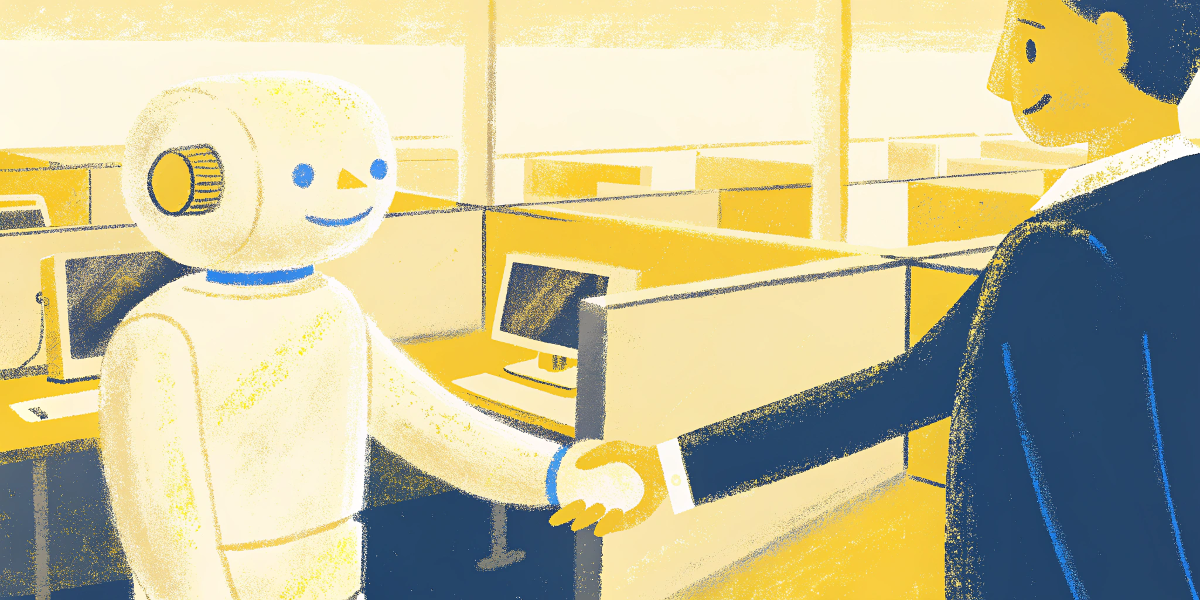
We’ve all heard it a thousand times since AI stormed the professional stage:
“AI is going to take your job.”
Some HR leaders might quietly think, Great — maybe it can take the 137 résumés piling up in my inbox too. Others are more guarded, envisioning instead a future closer to Black Mirror — glittering on the surface, but incrementally inching toward a time when the human soul of HR is quietly replaced by algorithm. And then there are those who have already made their peace with it — using artificial intelligence as a hapless but efficient apprentice. One that can mind-numbingly repeat the tasks, while experienced experts step in on the choices that require empathy, intuition, and context.
Today, AI in HR is fast, efficient, and even intimidating. But it’s also pliable — an asset that can be trained and tuned. The question remains, however: Are we shaping it, or is it quietly shaping us?
Right now, too many in HR — from CHROs, to Talent Leads, and everyone in between — find themselves wedged between two internal arguments:
One whispers: If AI gets to do the heavy lifting, am I still doing my job?
The other counterweights: If this instrument helps to protect my energy and attention for others, isn’t that the most human I can get?
Talent acquisition and HR strategy always balanced urgency with judgment. Now, AI is joining the conversation. Not just to automate, but to reimagine how talent is discovered, assessed, and nurtured.
So what’s really shifting?
Let’s look at how AI is reshaping HR, and how leaders can make sure that change stays rooted in strategy, ethics, and humanity.
The new landscape of talent acquisition
Talent acquisition was a straightforward game once: post the ad, sort through the résumés, make the hire. That playbook doesn’t cut it anymore. Today, hiring is a dynamic ecosystem — lightning-fast, boisterous, more competitive than ever before, driven by cultural transformation, technological advancement, and increasing pressures from all sides.
HR has been in the crosshairs for most of its life.
Build people-first plans here. Move compliance and policies over there. Be psychologist, detective, and talent consultant all wrapped into one — and still somehow hit hiring targets within budget. Leadership requires filling jobs yesterday with tomorrow’s experts and today’s budget. No pressure, just daily tasks.
Recruiters and People Teams these days are facing a dual challenge: one, to get high-potential candidates on board, and two, to actually retain them. In a sea of highly similar résumés — many generated by AI tools themselves — it’s harder than ever to find that one person who not only meets the job specification but completes the team as the missing piece of the jigsaw. Indeed, AI is increasingly part of the solution. According to Deloitte Human Capital Trends 2025, 77% of companies already use AI in hiring, and 39% apply it for automated candidate sourcing and screening. This has reportedly cut time-to-hire by 30% and improved the accuracy of identifying the “ideal candidate” by 23%. Impressive as these numbers are, they should be taken with caution: results can vary depending on implementation and data quality, and human oversight remains essential. The shift isn’t just about speed — it also raises expectations for employers, who now must navigate the balance between technological efficiency and the human judgment that defines effective recruitment.
This is where AI hiring comes in. AI hiring software can help hiring teams move faster and smarter. They sort through high volumes of resumes, point to good matches, and filter out noise that’s irrelevant. When set up correctly, artificial intelligence in HR becomes less gatekeeper and more beacon — leading talent that otherwise might have been overlooked.
It’s not magic. And it’s not perfect. AI doesn’t feel culture. It won’t read between the lines. That’s where experience, gut, and lived leadership enter in. But in good hands, AI talent acquisition gives HR something valuable — time. Time to unplug where it matters. Time to build real relationships. Time to make decisions that combine data with intuition.
The best recruiters don’t rely on algorithms alone. They know when to act, when to counter the trend, and when to follow their gut. Because at the end of the day, AI may help find the talent, but human beings know what makes an individual truly appropriate for the role, and for the team.
What’s AI actually doing in HR — past the hype
It’s easy to get swept up in the excitement. It’s either the end of modern recruitment or its savior, depending on the headline and the day. But when the excitement dies down, there’s a more practical picture that comes through — one in which AI is not set to replace HR teams, but to hone their work, take administrative tasks out of their hands, and clean up muddied decisions.
AI is already embedded in nearly every stage of the talent life cycle today. In talent acquisition, for example, AI recruitment tools are transforming how resumes are screened, interviews are scheduled, and candidates are contacted — often before a recruiter is even in the picture.
Here’s what AI actually does in modern HR processes:
- Resume screening at scale
Artificial intelligence recruitment software can scan hundreds of résumés in a matter of seconds, filtering them according to skills, experience, and career progression. Semantic analysis is employed by most now, interpreting the context and semantics beyond keywords. This saves time spent on routine tasks and identifies the best prospects upfront.
- Real-time candidate engagement
Chatbots such as Paradox (Olivia) and Humanly engage candidates instantly — answering questions, screening basic qualifications, and scheduling interviews around the clock. This improves responsiveness and candidate experience, freeing recruiters to focus on meaningful human interactions.
- Predictive hiring and retention analytics
Platforms like Eightfold and Visier use data-driven insights to forecast who’s likely to accept offers or who may leave soon. These predictive capabilities enable HR leaders to anticipate talent needs and act proactively, rather than reactively.
- Diversity optimization of the job description
Tools like Textio and Datapeople review language used in job descriptions to detect bias and suggest edits. This encourages diverse and qualified candidates to be attracted, reflecting broader DEI goals.
- Internal talent mapping and development
Smart platforms such as Gloat and retrain.ai reveal hidden potential within the current workforce, provide personalized development opportunities, and facilitate internal mobility, revolutionizing HR programs from reactive recruitment to forward-looking talent development.
- Automation of routine HR tasks
AI assists with onboarding paperwork, compliance monitoring, and policy administration through tools such as Leena AI and PeopleDoc, and avoid mistakes while saving time.
How AI supports long-term HR strategy
Talent Leads, CHROs, and HR strategists should not ask themselves what AI tool to buy next. Instead, they must ask a more fundamental question: How does AI support the long-term people and performance strategy?
Rushing into AI to speed up work will end up with a negative impact. Absence of vision, fragmented tools create data silos. Teams become drained coping with separate systems. And when technology goes ahead of culture, morale and trust suffer.
The actual potential of AI in human resources is not through quick wins, but through productive adoption into core HR functions:
- Workforce planning beyond recruitment
AI can forecast needs, identify skills gaps, and facilitate succession planning, making the hiring process proactive, not reactive and scrambling.
- Shaping culture, not improving efficiency
Smart tools can survey employee views, flag up risks to engagement, and allow leaders to create inclusion and belonging — grounding AI in the tissue of workplace culture.
- Skills mapping and future-proofing
In addition to screening CVs, AI-based platforms assist in mapping changing capabilities, so that one can create focused learning journeys and develop resilience against disruption.
Before implementing any AI hiring or HR technology, leaders need to ask:
- Is this solving a genuine strategic people issue, and not simply automating something?
- Will this tool make my team’s critical thinking more powerful, or eliminate it?
- Does it support our organizational values and DEI promises?
- Can it integrate well with our existing tech stack and data infrastructure?
Integrating AI in talent acquisition into long-term HR strategy is more a matter of subtle coordination than chasing the next new toy. The goal is to build systems where AI supports human expertise, strengthens leadership decision-making, and produces lasting business outcomes.
Because technology in and of itself will not produce winning teams. People, leadership, culture, and strategy will — and AI is a powerful ally when used with intention.
Smart, not blind use: Building ethical and inclusive AI practices
AI has revolutionized the tempo and scale of HR work — but it hasn’t (and needn’t) replace the human discernment that defines this field. AI in HR can reduce unconscious bias, improve consistency, and bring forth unconscious talent. It can do the reverse, however, when not carefully overseen.
At the end of the day, an algorithm is only as unbiased as the data it’s been trained on. And that data? It’s from us — our systems, behaviors, and hiring patterns over time. That’s why AI in talent acquisition requires both intention and supervision.
Bias in, bias out. Objective-looking tools can quietly perpetuate ingrained biases — especially when they’re trained on enormous volumes of past hiring data. Efficiency without accountability risks keeping the very people HR teams are trying to hire out.
For DEI officers, people leaders, and HR strategists, moral AI is not an option. It’s a shared responsibility. And it begins long before implementation.
Here’s how visionary HR departments are employing AI hiring solutions ethically and inclusively:
- Audit training data
Ask vendors hard questions: What datasets trained this model? Were gender, race, age, and disability accounted for? Was inclusion actively considered, or merely assumed?
- Insist on transparency
If a tool prefers one candidate to another, can it tell us why? Demand AI systems that provide explainability, particularly for decisions that affect someone’s livelihood.
- Build in human checkpoints
AI must enhance, not replace, hiring. Reserve the last call for humans. Use interviews, feedback loops, and real-team context to guide outcomes.
- Stress-test for fairness
A few companies now employ “bias bounties” — inviting outside experts to try to break AI for biases. Others co-design with neurodiverse, marginalized, or historically excluded groups in focus.
- Align tools with your DEI strategy
Tech should do work for — not around — your values. Ensure that all AI efforts are seen through a DEI lens and involve diverse voices in tool adoption and deployment.
AI recruiting is not just about getting better candidates faster. It’s about making effective, more human, more fair hiring practices — where data supports judgment, but not replaces it.
Because empathy, nuance, and context still matter. Technology can make it more efficient, but the essence of hiring — connection, potential, trust — is inherently human.
The future of HR strategy and Talent Acquisition will remain human-led
Artificial intelligence in HR is no longer some far-off hope. It’s already here — scanning résumés, mapping skills, predicting turnover, streamlining workflows. Not only is it changing the tools we use, but how HR leaders think about time, trust, and talent.
But even with its speed and scope, AI within talent acquisition has not recast the core mission. It has not replaced judgment with code or strategy with automation. What it has done — and will continue to do — is make HR leaders more deliberate, more agile, and more human than ever before.
This shift requires more than technical skills. Vision is required. Because the work of the future isn’t being built by data scientists and engineers — it’s being built by the people who get to hire, construct, and retain the talent that drives business forward.
In the coming years, AI recruitment tools will get smarter. They’ll listen more carefully, recommend more astutely, and even predict requirements before they’re needed. But they’ll still depend on human hands to tune them in — and on human hearts to ensure they’re serving people, not processes.
HR leaders are no longer just policy keepers. They’re culture architects — and now, interpreters of machine logic. It’s a complex job, I admit. But also a powerful one.
And if today’s transformation feels like it’s moving through darknesses — like navigating the dark silhouettes of something not yet fully grasped — that’s because we are, in many ways, still inside the cave.
AI can give light, even vision. But it is human beings — with compassion, values, and vision — who get to choose whether or not to muddy projections with reality, or step completely into the open and lead.
The future of HR always and forever will be human-led.
-
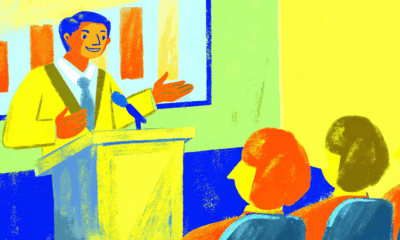
 Collaboration5 months ago
Collaboration5 months ago18 Experts Share Tips for Businesses Switching to Remote Work
-
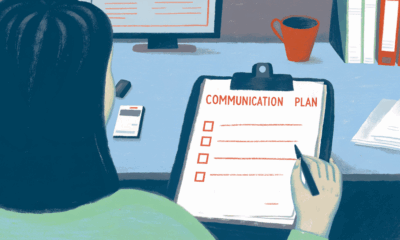
 Communication8 months ago
Communication8 months ago6 Communication Plan Templates With Examples
-

 Collaboration7 months ago
Collaboration7 months ago30 Work From Home Memes: Funny Work Memes to Make You Laugh
-
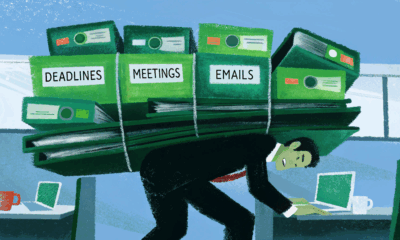
 Collaboration8 months ago
Collaboration8 months ago6 Tips for Lifting the Burden of Too Many Responsibilities
-

 Productivity7 months ago
Productivity7 months agoSuper True Mental Health Memes You’ll Probably Relate To
-

 Collaboration9 months ago
Collaboration9 months ago35+ Collaboration Quotes to Celebrate Teamwork
-
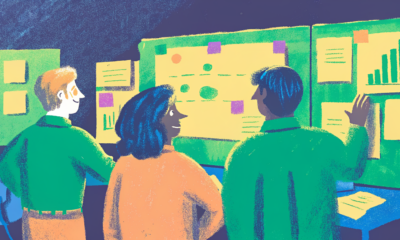
 Collaboration8 months ago
Collaboration8 months ago7 Easy Strategies for Effective Team Communication
-
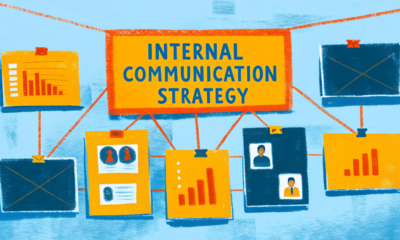
 Collaboration8 months ago
Collaboration8 months agoThe Definitive Guide to Creating an Internal Communication Strategy





